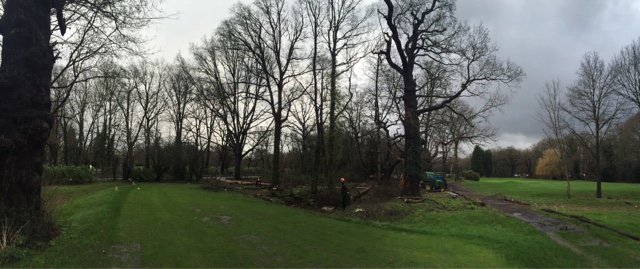During the
main leafing period, the process of keeping the main playing areas clear takes
priority over any other tasks. The
leafing policy follows a set procedure. The first part of the policy is to
identify the main playing surfaces and list them in priority order.
1.
Greens
2.
Aprons
3.
Around Greens
4.
Tees
5.
Fairways
6.
Rough
Leaves are
either blown straight into woodland areas, or blown into areas of rough and
piled for collection. The leaves are collected in two ways. One is a machine
with a giant hose for collecting static piles, and the other is a sweeper
machine used more on fairway edges/rough. The direction and place the leaves
are blown to for collection is dependent on many factors such as ground
conditions, wind direction, machinery used and machinery access, etc. This may
involve blowing leaves across a whole fairway, green, tee, or through a bunker.
The leaves become more difficult to move when wet and even more so when they
build up in quantity. Heavy rainfall, wet and soft ground conditions restrict
what machinery can be taken onto the course. Frozen conditions also restrict
efficiency with potential damage to the grass plant from machinery and leaves
being frozen to the surface. The nature of each specific task on each hole when
leafing, and the time taken means that the piles of leaves are not collected as
quickly as they are created. A large area like a fairway can sometimes take
several hours to blow, so it is therefore impossible to clear all fairways on a
daily basis. Clearing all fairways can take several days and can appear
untouched within hours of completion.
During periods of high leaf fall the Greenstaff will spend eight hours a
day trying to deal with the leaves, on windy days this process can be immensely
challenging.
Due to Vibration white
finger (VWF), also known as hand-arm vibration
syndrome (HAVS), the exposure to using hand blowers also needs to be
limited to prevent HAV occurring.
This comes under The Control of Vibration at Work Regulations 2005, created
under the Health
and Safety at Work etc. Act 1974.
At weekends
we are not permitted to use machinery until after 7am, due to noise issues with
neighbouring houses, leaving us only a very small window to clear leaves using leaf
blowers. This unfortunately means that only greens and aprons can be cleared
before play begins.












